
Both armies are waiting to see who will be first to attack: frontline results of the week. Overview of hostilities map
Both armies will be waiting to see who will be the first to take offensive action, because the offensive is always more difficult. Who will make the move is the biggest intrigue of the coming weeks. Now the stakes are rising, because neither side knows what forces and reserves each side has
Military expert and Espreso TV host Serhiy Zgurets commented on the frontline situation in his military summary of the week.
Russia still tries to surround Bakhmut
Ukrainian troops’ retreat from Soledar was carried out after destroying a significant enemy force and the Ukrainian Armed Forces withdrew to prepared positions, from where they are conducting artillery strikes against the enemy. In general, this situation reflects the enemy's attempts to either capture Bakhmut or ensure a frontal advance on the city.
The enemy is not succeeding in these efforts, so they put the main emphasis on trying to surround Bakhmut from different directions. This is an attempt to advance in the direction of Krasna Hora - Paraskoviivka to ensure that one of the AFU supply routes along the Bakhmut-Siversk line is cut. A more dangerous situation is the enemy's attempts to move from Klishchiivka to Ivanivske, to the road connecting Bakhmut and Kostyantynivka. In the area of Klishchiivka, there are intense hostilities, Russians are trying to advance through the canal. Our defense is being pushed there, and this area is the most difficult. Regular Russian army units are operating there. But beyond Klishchiivka, the dominant heights begin, and the Ukrainian Armed Forces are trying to prevent the enemy from advancing by using artillery.
In both cases, the situation is dangerous and there is a potential threat of cutting off the routes that supply Bakhmut. Although these routes are not the only ones that supply the city. The dynamics in the city will depend on the forces and means we will have there and on whether we manage to deter Russian forces, which are trying to conduct frontal assault attacks in particular.
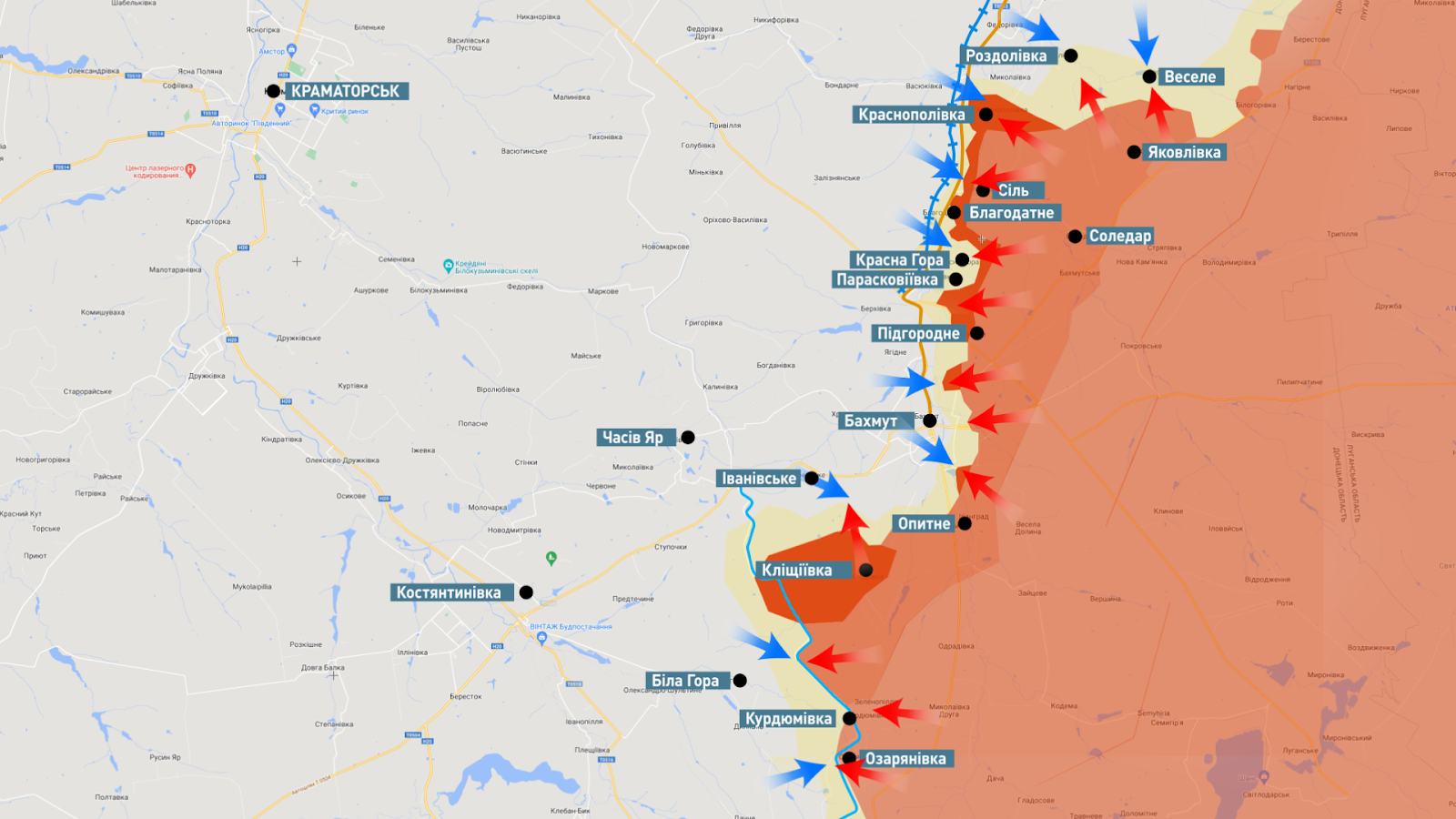
Russia's small group tactics and the Ukrainian Armed Forces' response
In Soledar, the enemy used small unit tactics and artillery superiority. When our positions were being destroyed, it was logical to withdraw our troops because there was nothing left to defend. This was the case in certain areas near Bakhmut, where the tactics of small units sometimes allowed Russians to push through our defense. The defense says they are looking for ways to counter small groups. They are using grenade launchers and machine guns and grinding this manpower. The AFU General Staff says we have every capability to hold Bakhmut and further destroy the enemy. This is the best route - to hold the defense as long as there is something to defend.
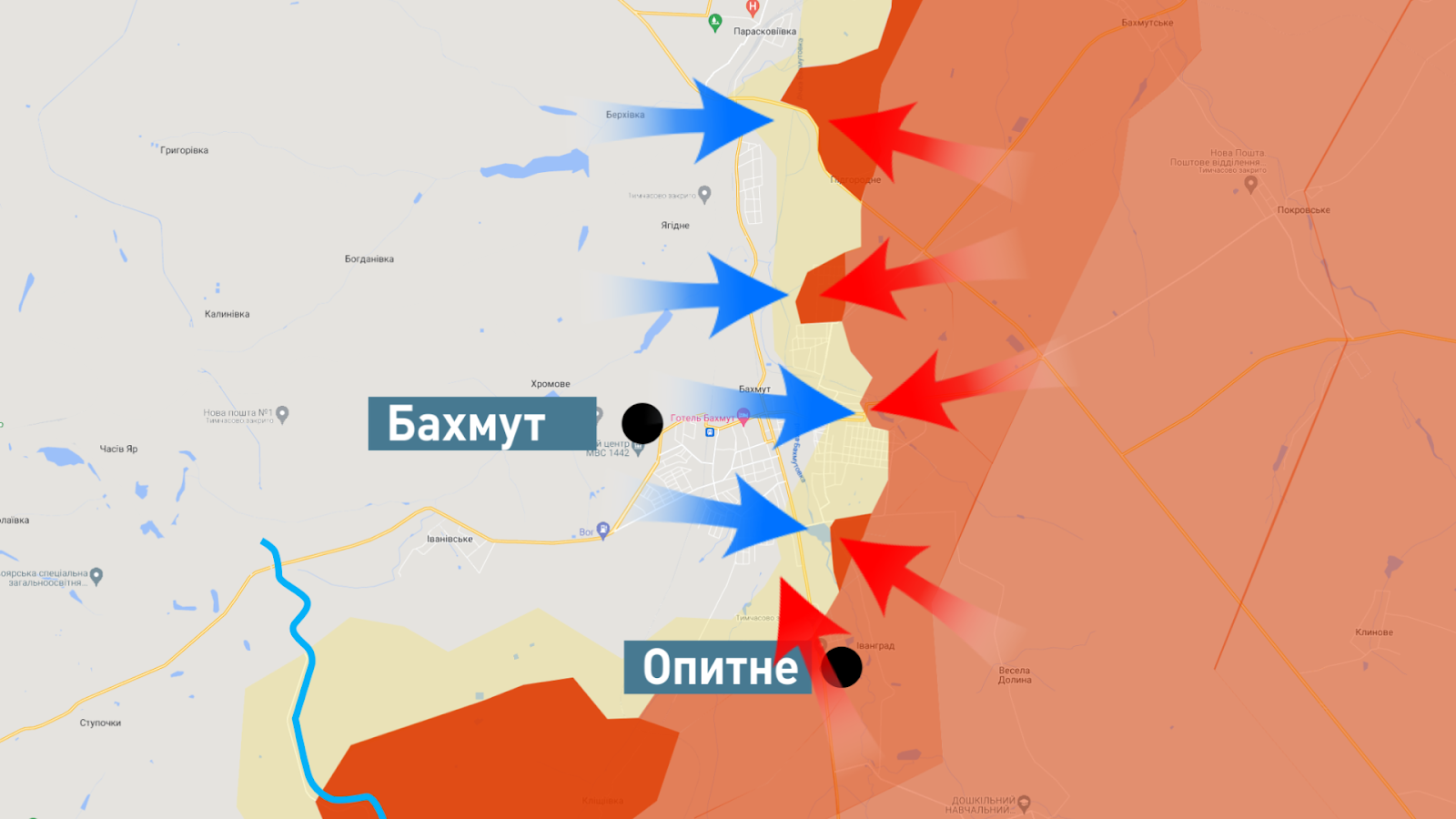
We cannot know exactly what forces and means the AFU General Staff has when planning an operation. All these assumptions we make are based on limited information. In any case, the final decision remains with the General Staff, because the full information affects the choice of strategy, how we will deter the enemy or launch offensive actions.
Regarding small-group tactics, it may seem that small units are better able to advance to a defensible position. The number of troops in Russia is such that these small groups are constantly advancing. Using Vuhledar as an example, there are 58 ground attacks per day. Every 25 to 30 minutes, one group tries to advance, dies, and a few minutes later someone else tries to advance to gain a foothold at the line where the previous group was. It's about the advantage in numbers in narrow sections of the front line, which the enemy continues to use. Will it work in other areas? We are drawing conclusions from this tactic - we are developing countermeasures and must take into account mistakes. When President Zelenskyy holds a meeting and says that we need to pay attention to the training of commanders, this is an echo of the mistakes on the front line, where we have to draw conclusions and protect ourselves from the mistakes that have been made.
South: Vuhledar is important for both sides
The southern front has somewhat reactivated, but we need to understand the dynamics of this process. In Zaporizhzhia, there were attempts by the enemy to conduct hostilities in Huliaipole and Orikhiv settlements. There were 4 settlements where the enemy tried to advance with platoon units, was repelled and returned to their starting positions, suffering losses. The dynamics have not changed in any way.
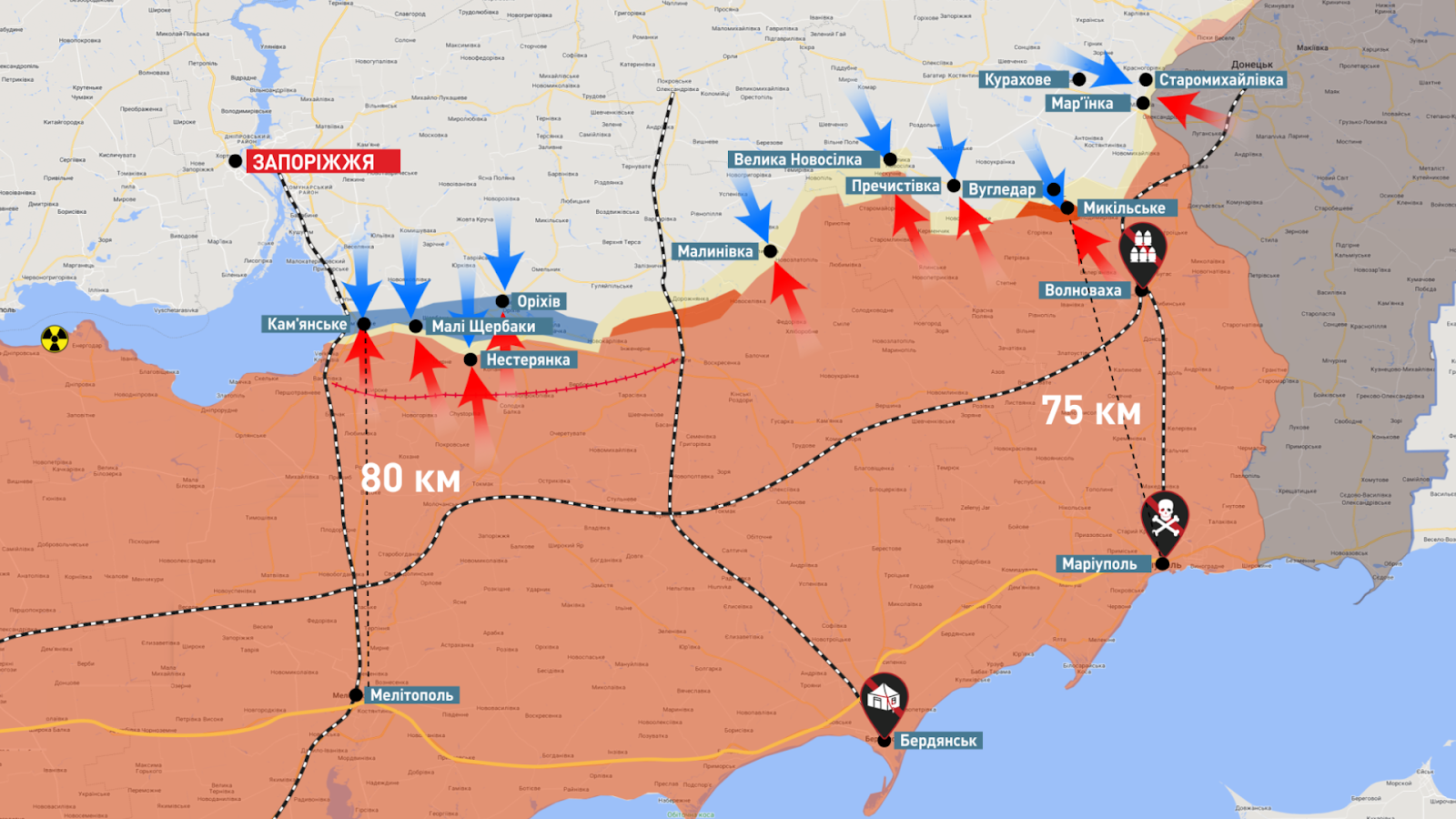
The situation near Vuhledar is much more complicated. There are many components here, and the town is important for us and for Russians. For us, it is important because of the control over the railway line (10 km to Volnovakha), which allows us to strike at the communication line that feeds the entire Russian grouping. It is also an important foothold for possible offensives and advance towards Mariupol. Russians are trying to push us away from Vuhledar. There are active hostilities there now. Capturing the town would threaten the grouping of our troops in the Donetsk direction and create the preconditions for blocking our offensive. Fighting is currently taking place in Vuhledar. The enemy is trying not only to storm Vuhledar from the front, but also to bypass it from 2 sides by expanding the offensive line. The situation there is quite complicated. According to Cherevaty, 5 Russian tanks, 3 armored personnel carriers, and 3 unmanned aerial vehicles were destroyed. Ka-52 helicopters are also being destroyed there. This is the most tense area on this front line. Some experts say that Russia’s efforts near Vuhledar are a distraction.
Russia’s preparation for an offensive in the Luhansk region
At the same time, the enemy is amassing forces in the north and Luhansk region may become their biggest priority in the next 2 to 3 weeks. The enemy is deploying units trained in Belarus there, and the main enemy force is accumulating there to launch a possible offensive toward Izium between Oskil and Zherebets rivers. A corridor is being formed there, where an attack from above will aim to push our forces south. To reach Kreminna, Svatove and launch an offensive on the Lyman. Thus, to create pressure on the Ukrainian Armed Forces from both the south and the north. Coming from the Russian city of Valuiki, where a significant number of Russian troops are now amassing.
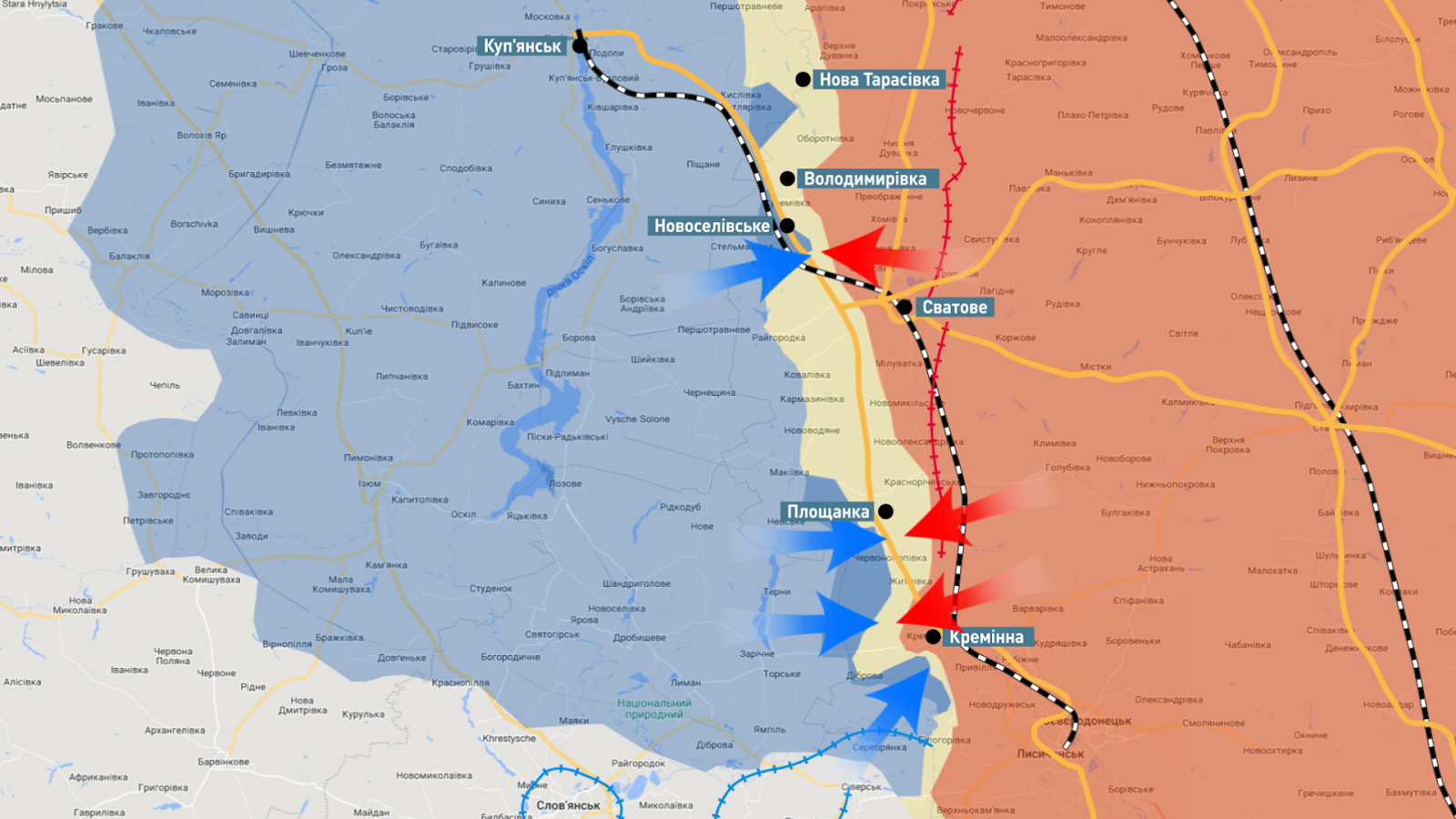
I think the direction of Severodonetsk and Lysychansk is more promising for our offensive. We can use Kreminna as a springboard to recapture the entire region. The enemy understands this and thus deploys these units that are coming from the north through Valuiki and strengthening the defense line in the Svatove-Kreminna area. There are more forces there. There are active actions on our part, but there is no significant progress.
The armies are waiting to see who will launch a major offensive first
The enemy does not have an advantage in numbers in any direction to carry out active offensive actions. I think that both armies will be waiting to see who will be the first to take offensive action, because offensive is always more difficult. It means more losses, demasking of intentions. The one who defends has a certain advantage. Who will make the move is the biggest intrigue of the coming weeks. The stakes are rising now, because neither side knows what forces and reserves each side has. Putin's army has a political task to ensure access to the administrative borders of Luhansk and Donetsk regions. This pressure can play a cruel joke - the Russian army will be forced to start fighting and we will benefit from the enemy's first steps.
The unexpected offensive from Belarus is a PSYOP
On January 26, there was information about an alleged landing from Belarus in the west. It seems that this is an element of a psychological operation to spread panic among Ukrainians. We take this into account, as the enemy has not made any attempts. All these frontline areas are tightly controlled and rumors are part of the Russian PSYOP. There are 5 roads where the enemy can attack. They are all under fire, mined and dug up. All these talks about a surprise landing or offensive are false.
New weapons: Western tanks and domestic developments
The timeframe for the arrival of tanks varies. The fact of future delivery allows us to feel more comfortable with the tanks we already have. If we lose a certain number of tanks, we have a guarantee that these losses will be compensated. This means that we don't have to wait for the full package to arrive. Although the United States advises us to wait for all military aid packages, we are preparing units and only then can we prepare powerful counteroffensive actions.
Now we have Defense Minister Reznikov's statement that the new units will be filled with foreign weapons and reinforced with our developments. This includes the Bohdan self-propelled artillery system. To produce it, we need to have transferred capacities from Kramatorsk, where barrels have been manufactured, and other enterprises. It means a new cooperation and a new location for the production of this self-propelled gun, which is needed in large quantities, like all artillery. The combat practice of the self-propelled artillery will be an opportunity to improve this system. We must rely not only on the help of our partners, but also develop our own weapons. We must also remember about our Neptune missiles and Sapsan missile systems. We really need it to achieve a certain parity with the enemy in certain types of weapons.
New air defense systems will take Ukraine’s missile defense to a new level
As long as the enemy launches at least one missile, there is a threat. Kinzhal missiles were launched in a recent attack - the enemy tried to destroy a critical infrastructure facility. They failed. Sometimes missiles cannot fulfill the task the enemy is counting on. Russia's missile production capabilities are declining, but at the same time, the number of air defense systems we need to receive is increasing. This will allow us to significantly strengthen our ability to combat both drones and cruise missiles. We will also be able to start fighting hypersonic ballistic missiles (Iskander, Kinzhal).
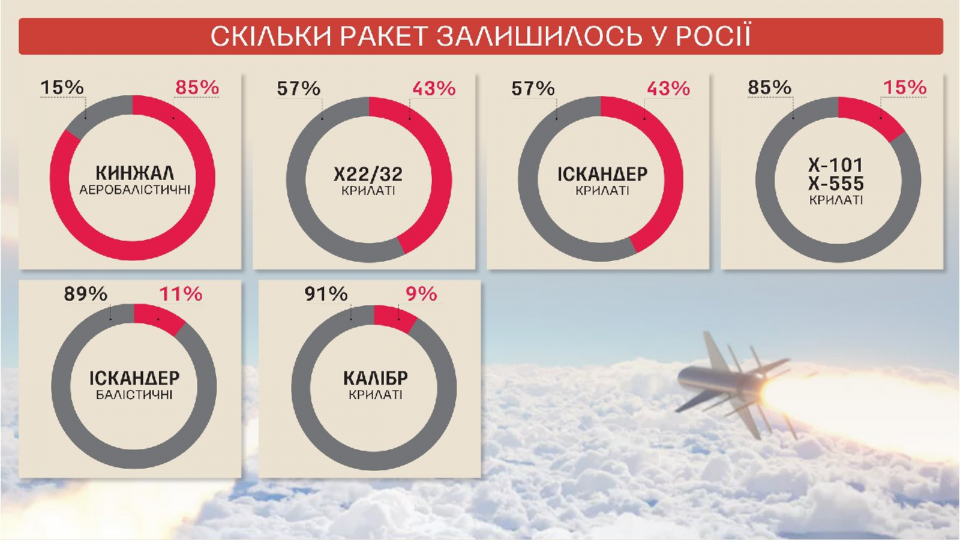
- News












































